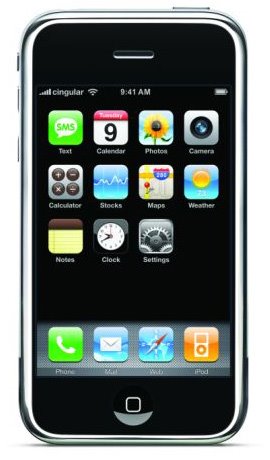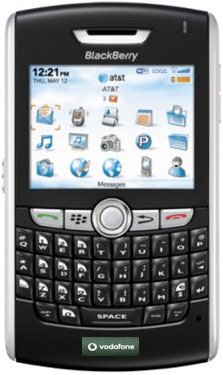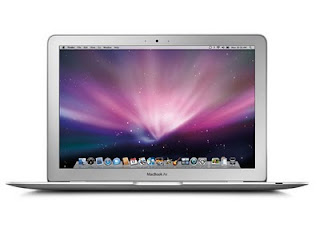The good: The Canon PowerShot A1200 IS is inexpensive while still offering very good features and photo and video quality.
The bad: The camera's shooting performance is slow.
The bottom line: As long as you're not in a hurry and your subject is stationary, the Canon PowerShot A1200 is an excellent little camera for the money.
Review:
Editors' note: Several of the design, features, and shooting options are identical between the Canon PowerShot A1200 and the PowerShot A3300 IS we reviewed earlier, so readers of the earlier review may experience some deja vu when reading the same sections below.
Canon all but abandoned optical viewfinders on its PowerShot cameras; the high-end G12 was the only one. That changed at CES 2011, though, with the announcement of the Canon PowerShot A1200, an entry-level point-and-shoot with a real-image zoom viewfinder.
Along with the viewfinder, this budget-friendly 12-megapixel compact is powered by AA-size batteries, has a large selection of shooting ... Expand full review
Editors' note: Several of the design, features, and shooting options are identical between the Canon PowerShot A1200 and the PowerShot A3300 IS we reviewed earlier, so readers of the earlier review may experience some deja vu when reading the same sections below.
Canon all but abandoned optical viewfinders on its PowerShot cameras; the high-end G12 was the only one. That changed at CES 2011, though, with the announcement of the Canon PowerShot A1200, an entry-level point-and-shoot with a real-image zoom viewfinder.
Along with the viewfinder, this budget-friendly 12-megapixel compact is powered by AA-size batteries, has a large selection of shooting options, uses an f2.8 28mm-equivalent wide-angle lens with a 4x zoom, and captures 720 HD-resolution movie clips. About the only thing missing is optical image stabilization, but you can counteract hand shake by using the viewfinder.
Like most cameras in its price range, though, the A1200 is slow, so I wouldn't recommend it for regularly shooting active kids and pets. It also isn't great at higher ISO sensitivities, so low-light photos without a flash aren't the greatest. Still, given the cost, they're hardly disappointing.
Key specs Canon PowerShot A1200
Price (MSRP) $109.99
Dimensions (WHD) 3.8x2.5x1.2 inches
Weight (with battery and media) 6.5 ounces
Megapixels, image sensor size, type 12 megapixels, 1/2.3-inch CCD
LCD size, resolution/viewfinder 2.7-inch LCD, 230K dots/Yes, optical
Lens (zoom, aperture, focal length) 4x, f2.8-5.9, 28-112mm (35mm equivalent)
File format (still/video) JPEG/H.264 (.MOV)
Highest resolution size (still/video) 4,000x3,000 pixels/ 1,280x720 at 24fps
Image stabilization type Digital
Battery type, CIPA rated life AA-size batteries (2), 200 shots (alkaline)
Battery charged in camera No
Storage media SD/SDHC/SDXC Memory Card, MultiMediaCard, MMCplus Card, HC MMCplus Card
Bundled software ZoomBrowser EX 6.7/PhotoStitch 3.1 (Windows); CameraWindow DC 8.4 transfer utility; ImageBrowser 6.7/PhotoStitch 3.2 (Mac)
For its sub-$110 price, the A1200 is capable of turning out some excellent photos. But like most compacts, this really depends on how much light you have--the more, the better. At and below ISO 200, photos have great color and generally look sharp with good detail. At ISO 400, a sensitivity regularly used for shooting indoors without flash, photos get softer-looking, but noise and noise suppression are well balanced making 4x6 prints possible. There is a noticeable increase in noise at ISO 800 resulting in faint yellow blotches, and colors start getting slightly washed out. They're still pleasing enough for Web use at small sizes, though. However, everything that happens at ISO 800 increases at 1,600; use it for when you absolutely need to control motion blur and don't have a enough light or can't use the flash. Basically, this camera is great with a lot of light and very good indoors with bright lighting and/or a flash, but I wouldn't recommend it for regularly shooting in low-light conditions.
Sample photos: Canon PowerShot A1200
Sample photos:
Canon PowerShot A1200
There is slight barrel distortion at the wide end of the A1200's lens and maybe a hint of it with the lens in telephoto, too. Center sharpness is very good, and though it softens a touch as you move out, it was still remarkably consistent edge to edge and in the corners compared with other budget cameras I've tested. Also, there was very little fringing in high-contrast areas of photos.
Color performance is excellent from the A1200: bright, vivid, and accurate. Exposure is also very good. Highlights will blow out on occasion. The auto white balance indoors is a little warm, but otherwise it's good and you can always take advantage of the presets or manual white balance if you're not happy with the results.
Video quality is on par with a basic HD pocket video camera; it's good enough for Web use and nondiscriminating TV viewing. Panning the camera will create judder that's typical of the video from most compact cameras, and you'll notice motion trailing on fast-moving subjects. The zoom lens does not function while recording, but you do have a digital zoom; I suggest not using it as the results are not pleasant.
General shooting options Canon PowerShot A1200
ISO sensitivity (full resolution) Auto, 80, 100, 200, 400, 800, 1,600
White balance Auto, Daylight, Cloudy, Tungsten, Fluorescent, Fluorescent H, Custom
Recording modes Program, Live View Control, Auto, Easy, SCN, Creative Filters, Discreet, Movie
Focus modes Normal AF (Face, Tracking, Center), Macro, Infinity
Macro 1.2 inches (Wide)
Metering modes Evaluative, Center-weighted average, Spot
Color effects Vivid, Neutral, Sepia, Black & White, Custom (contrast, sharpness, and saturation)
Burst mode shot limit (full resolution) Unlimited continuous
Shooting modes are geared for point-and-shoot use, so no semimanual or full manual modes. The most control you get over settings is in Program mode, letting you select things like white balance, ISO, and metering. It's also the only mode with access to the camera's My Color options like Vivid and Sepia, as well as a Custom option with adjustments for contrast, sharpness, and saturation. On the other hand, you have the new Live View Control mode, which enables you to adjust brightness, color, and tone with onscreen sliders and see what the photo will look like as you make the changes.
If you just want to point and shoot, there's Canon's Smart Auto, which determines the appropriate settings based on the scene you're shooting. An Easy mode works similarly, but it heavily limits settings. There's a new Discreet mode, too, that shuts off all sound and lights so you can shoot without accidentally disturbing the subject or those around you.
The Scene mode has all the usual suspects: Portrait, Landscape, Kids & Pets, Low Light, Beach, Foliage, Snow, Fireworks, and Long Shutter (exposure settings from 1 to 15 seconds). Oddly, there's no panorama option, which is a pretty popular option these days. Canon does include its Smart Shutter option in the Scene mode, though, providing a smile-activated shutter release and Wink and Face Detection self-timers. Wink allows you to set off the shutter simply by winking at the camera, and with the Face Detection option, the camera will wait until it detects a new face in front of the camera before it fires off a shot. Both work well. Also, since there is no optical image stabilization, there is a Blur Reduction mode that captures 2-megapixel photos using a high ISO sensitivity to keep shutter speed as fast as possible.
Canon's Creative Filters are now all located under a spot on the mode dial, where you can select Toy Camera Effect, Monochrome, Super Vivid, Poster Effect, Fish-eye Effect, and Miniature Effect. While some may find these to be a bit goofy, they can be a lot of fun to play with, if only to add some interest to what would otherwise be a boring shot. I particularly liked the results from the Toy Camera Effect, which has Standard, Warm, and Cool settings.
If you like to shoot close-ups, the A1200 can focus as close as 1.2 inches from a subject. The 12-megapixel resolution allows you to inspect fine details, but they're still a little soft and could use some sharpening with photo-editing software. Also, the f2.8 aperture does create a shallow depth of field in macro, which can make for some nice photos.
Shooting performance is overall slow. From off to first shot takes 2.4 seconds. The wait between subsequent shots averaged 3 seconds; using the flash basically doubles that time. Shutter lag--the time from pressing the shutter release to capturing a photo--is 0.5 second in bright lighting and 0.9 second in low-light conditions. The continuous shooting speed is pretty slow, too, at 0.7 frames per second with focus and exposure set with the first shot. The performance might not be a problem if most of your photos are of stationary subjects. But, if you're trying to capture active children and pets or sports, it'll be tricky to get the shot you want with this camera.
Canon has improved the fit and finish of the A-series cameras for 2011. For as inexpensive as the camera is and being made almost entirely of plastic, the A1200 still looks good. Its two AA-size batteries add weight as well as allow for a wider grip on the right side. The optical viewfinder is, again, a rarity on an entry-level compact. The area visible is about 80 percent of what will be in your image, but it's very nice to have. The 2.7-inch LCD covers 100 percent, and is bright with good color, should you want to use it for framing instead.
The controls and menus are straightforward, too. The buttons are flat, but they're big and easy to press. Plus, a display button allows you to quickly shut off the LCD so you don't waste battery life when using the viewfinder.
On the right side is a Mini-USB port for connecting to a computer as well as an AV output for an optional AV cable and DC in jack for an optional AC power adapter. The battery and SD memory card compartment is in the bottom of the camera behind a locking sliding door. Battery life is average with alkaline batteries; you get about 200 shots. However, you can extend that count greatly by only using the viewfinder or switching to NiMH rechargeable batteries.
Conclusions The Canon PowerShot A1200 is an excellent option for those just looking to take a good snapshot. After slowly watching optical viewfinders disappear from Canon compact cameras (and everyone else's), it's great to see one available on something other than a high-end camera. The convenience of AA batteries is a plus, too. And although some will miss having full control over shutter speed and aperture, they're of limited value in this camera. Instead you get the additions of the Live View Control and Creative Filters modes that let you do some cool things with little or no effort. As long as you don't need speedy shooting, it's a bargain.




0 comments:
Post a Comment